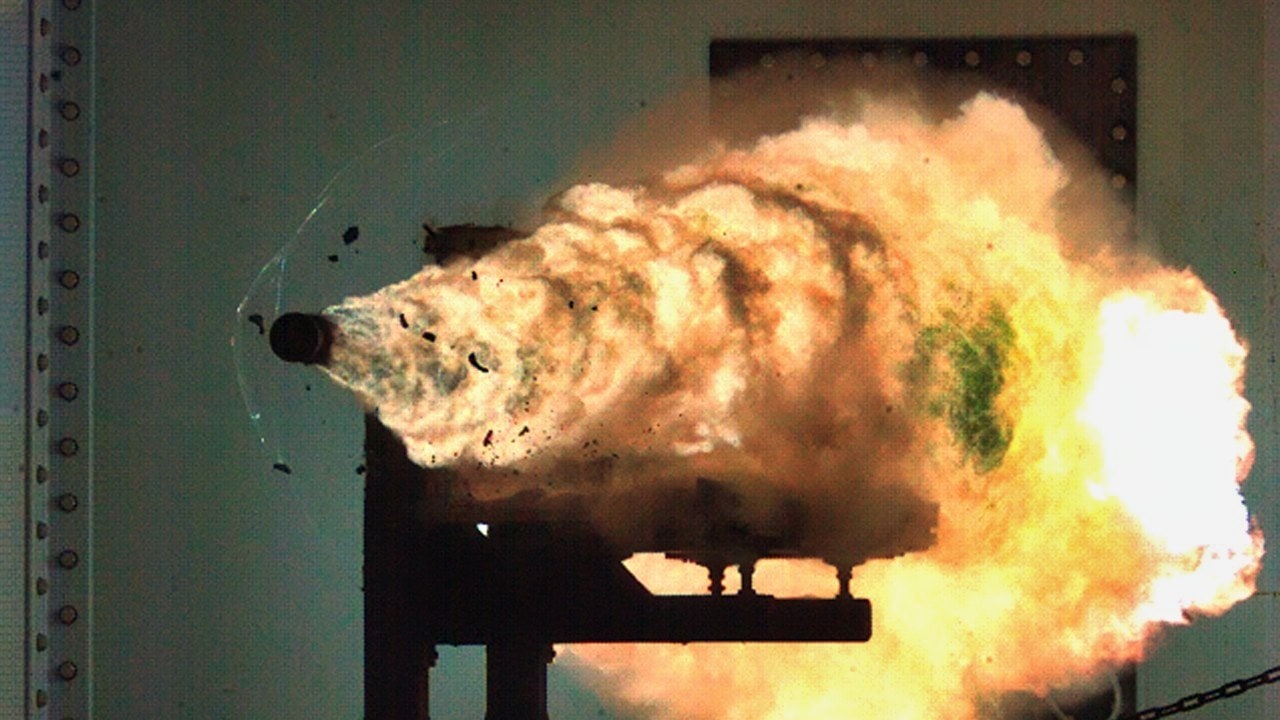Summary and Key Points: The U.S. Navy’s futuristic electromagnetic railgun was an ambitious attempt to revolutionize naval warfare, firing projectiles at speeds up to Mach 7 and distances of 100 nautical miles without gunpowder.
-Despite investing $500 million over 15 years and achieving impressive test results, significant technical challenges emerged, including rapid barrel wear from intense heat, high energy demands limiting firing rates, and limited platforms capable of providing sufficient electricity.
-Ultimately, cheaper hypersonic missiles and laser weapons, offering greater range and higher firing rates, rendered the railgun impractical. The project was officially canceled in 2021, closing a promising but ultimately unfeasible chapter.
Why the Navy’s Futuristic Railgun Became a $500 Million Flop
Almost anyone who watched the 2009 film Transformers 2 remembers the famous scene where one of the “bad” transformers (a Decepticon) is destroyed by a direct hit from a United States Navy vessel’s railgun. The project, which was finally canceled in 2021, was only a few years old when the film was made, but the concept was—and turned out to be—too good to be true.
At the time, the railgun was one of those advanced military innovations that verged on science fiction: a revolutionary weapon that could fire heavy projectiles farther and faster than existing main naval guns.
The system, developed for testing, was built by General Atomics and BAE Systems and was finally tested in 2010. The plan was to place it aboard a US naval vessel by 2016.
The weapon itself was based on the concept that an electromagnetic force could launch a projectile faster and farther than a conventional naval gun—specifically at speeds up to Mach 7 and at ranges of up to 100 nautical miles. The program ran for 15 years and cost $500 million.
Results in testing were impressive, but in 2021, the Navy canceled the effort for several reasons, and the weapon was never fielded.
As far into the program as 2018, the US Navy still supposedly saw utility in the effort. Still, an official statement in July 2021 explained that “given fiscal constraints, combat system integration challenges, and the prospective technology maturation of other weapon concepts, the Navy decided to pause research and development of the Electromagnetic Railgun [EMRG] at the end of 2021.”
Technical Issues
In 2018, the then-chief of Naval Operations, Adm. John Richardson, told Congress that the weapon had yet to reach its promised range performance, factors that ultimately led to its cancellation.
“That involves a number of technologies,” he said. “The barrel itself is probably the limiting case, the engineering on that, the materials required to sustain that power pulse, and the heat and pressure that’s involved in launching those projectiles.” This all caused the barrel to wear out very quickly, mostly due to the extreme heat created by the firing of the gun, degrading the barrel’s materials.
Another limiting item was the power requirements for the weapon, which needed massive bursts of energy to fire each round. Only the Navy’s three-ship Zumwalt class destroyers, which have had separate problems, reportedly were capable of supplying the electricity needed to operate the gun.
The energy requirements created an additional problem: the time required to recharge the gun to fire another projectile. This restricted the rate of fire to a point where the railgun could not be used for missile defense, which was one of the prime missions many hoped it would be able to carry out.
The original concept for the railgun was very attractive. The idea was that using these high-powered energy weapons would launch projectiles that could provide an effective weapon at a fraction of the cost of the latest compared to smart bombs and missiles.
Using electricity instead of gunpowder, jet fuel, or rocket engines to accelerate a projectile to six or seven times the speed of sound was supposed to cost far less by using only electricity to do so—and by not having to rely on expensively engineered missile bodies.
Those speeds create enough kinetic energy to destroy targets, but the expense of using the railgun and other impracticalities eventually caused its cancellation. Range was another issue. In order to get close enough to a target to use the railgun, the ship would be well within range of conventionally fired missiles from enemy vessels.
What eventually did in the program was the shrinking costs for hypersonic missiles and directed energy weapons, which were less expensive and offered a higher rate of fire and longer range.
About the Author
Reuben F. Johnson is a survivor of the February 2022 Russian invasion of Ukraine and is now an Expert on Foreign Military Affairs with the Fundacja im. Kazimierza Pułaskiego in Warsaw. He has been a consultant to the Pentagon, several NATO governments and the Australian government in the fields of defense technology and weapon systems design. Over the past 30 years he has resided in and reported from Russia, Ukraine, Poland, Brazil, the People’s Republic of China and Australia.

